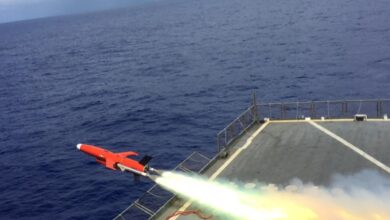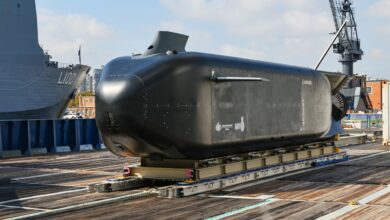Boeing Showcases Latest Autonomous Anti-Jam Technology for US Space Force
Boeing has demonstrated hardware-software integration on the US Space Force’s protected tactical satellite communication prototype (PTS-P).
The prototype will process the US military’s space-based Protected Tactical Waveform through software-defined beam-shaping.
The method leverages geolocation and active jamming suppression in real time, gathering thousands of data points every second.
During the trial, Boeing’s latest anti-jam capability was put through various simulated scenarios where an adversary attempted to block a user’s communication.
The prototype autonomously mitigated highly-dynamic single or simultaneous jamming attempts and preserved connectivity.
The prototype was also successful when a user was close to the source of interference.
“Maintaining communication with our deployed forces during hostility gives us a tactical edge on the battlefield,” US Space Force PTS-P Program Manager Justin Bruner said.
“Our adversaries are always attempting to deny our ability to communicate. On-board, autonomous, real-time nulling of jammers greatly enhances our resiliency, ensuring the United States and our allies can provide our warfighters with secure, reliable communications in a contested environment.”
“Boeing has made significant strides in the development and execution of a nulling algorithm with flight-like firmware, demonstrating agile anti-jam capability. PTS-P and all of our Protected Anti-Jam Tactical SATCOM (PATS) programs are critical to this effort.”
Maintaining Technical and Space Superiority
Dubbed the “pacesetter program,” the protected tactical SATCOM project involves rapid prototyping and a quick delivery timeline to meet the US Space Enterprise Consortium’s contract requirements.
Boeing’s latest demonstration follows a critical design review of the PTS-P model in March and a test in April focused on ground-based anti-jam SATCOM technology.
The company will perform additional PTS-P hardware-software demonstrations in the coming months. By 2023, trials will include the integration of the prototype with a host vehicle.
“The Space Force understands these rapid prototyping programs are needed to maintain technical and space superiority,” Boeing Vice President of Government Satellite Solutions Troy Dawson explained.
“We are innovating to meet the needs of the evolving threat. This requires us to try things that we’ve never tried before, moving quickly, failing quickly, and ultimately fielding first-of-its-kind technology that is ready for the rigors of the battlefield.”
“Our efforts on PTS-P are setting the pace, and blazing a trail that I anticipate many more national security programs will follow.”












